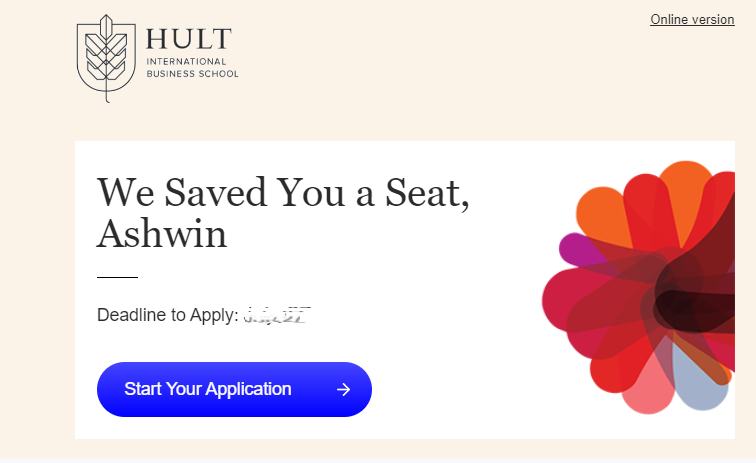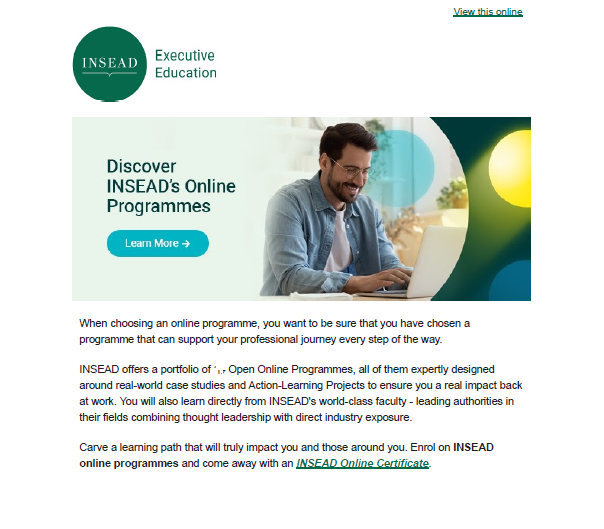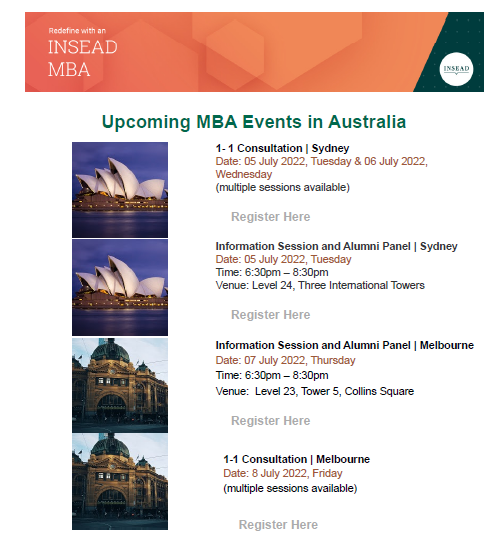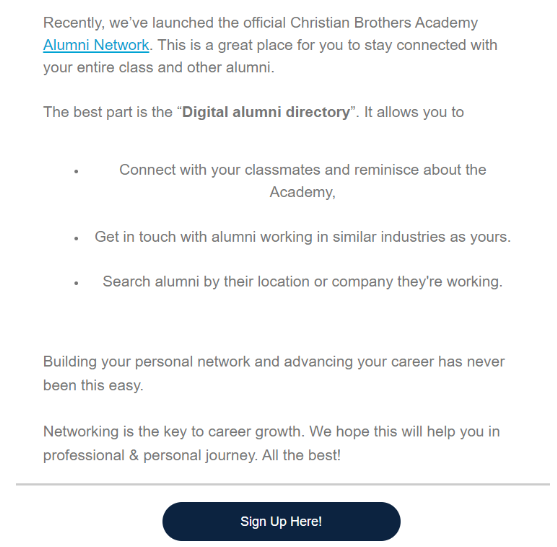Introduction
Have you ever wondered how your educational institution can stand out in the crowded digital space? In an era where everyone's inbox is overflowing, how can you ensure that your message reaches your audience?
Enter email marketing - a dynamic tool that goes far beyond sending generic updates. It's about building relationships and creating a community that resonates with your institution's vision.
If you're looking to create meaningful conversations with your students, faculty, and alumni, understanding the strategies of higher education email marketing can make all the difference.
You’ve reached the right place. Let’s dig in.
Why Email Marketing is Important for Educational Institutions
So let’s understand the true impact of email marketing on your educational institution's communication strategy.
Direct Communication: Unlike other marketing channels, email allows you to reach your audience directly in their inboxes. This ensures your message is received without the distractions of social media or other platforms.
Personalized Experience: With email marketing, you can tailor messages to the specific needs of your students, faculty, and alumni, creating a more personal and relevant experience.
Cost-Effective: Compared to other forms of marketing, email campaigns are incredibly cost-effective, offering a high return on investment. It is especially crucial for educational institutions operating within tight budget constraints.
Measurable Impact: With analytics, you can track the success of your campaigns, measuring open rates, click-through rates, and engagement levels. This data is needed for continuously improving your communication strategy.
Proven Email Marketing Strategies for Educational Institutions
Strategy 1: Personalized Communication
In higher education email marketing, personalization is your secret weapon. You can craft emails that speak directly to each recipient, resonating with their individual experiences and interests.In fact, Campaign Monitor reports that simply personalizing the subject line can boost the chances of your email being opened by as much as 26%.
- Use a user-friendly email marketing template that allows for customization.
- Include the recipient's name, course interests, or recent campus events they’re likely to attend.
The result? A surge in engagement and a feeling of personal connection.
Pro tip: Use behavioural triggers to send personalized emails based on student actions, like course browsing or event sign-ups.
The following personalized email template is sent from Hult International Business School to announce the deadline for their application.

Strategy 2: Segmenting Email Lists
The power of segmentation in an email marketing campaign for an educational institute cannot be overstated. It's about conveying the appropriate message to the intended audience at the ideal moment.
According to the DMA, segmented email lists contribute to 25% of revenue, and targeting these segments boosts revenue by 30%.
- Divide your audience into specific groups: prospective students, current students, alumni, and faculty.
- Adjust your content to cater specifically to the distinct needs and interests of each segment.
This strategic approach ensures maximum relevance and impact of your messages.
Pro tip: Utilize advanced segmentation by incorporating data points like engagement history, academic performance, and geographic location.
Strategy 3: Content That Educates
Think of your emails as more than just communication tools. They are conduits of education. Your content should inform, engage and enlighten.- Share updates about campus facilities/programs, academic advancements, and notable achievements.
- Provide valuable resources and tips that benefit your audience's educational journey.
By offering content that educates, you position your institution as a valuable knowledge hub.
Pro tip: Incorporate multimedia elements like videos, infographics, and interactive content to make your educational emails more engaging and digestible.
Here’s an inspiring email template from INSEAD, educating candidates on their online programmes and how choosing one could benefit their careers.

Strategy 4: Automated Email Campaigns
Automation in email marketing is like setting the sails in the right direction and letting the wind do the work. It's efficient, effective, and essential.
- Set up automated welcome emails for new admissions.
- Use reminders for important dates, campus activities and deadlines.
This strategy ensures consistent communication without the need for manual intervention.
Pro tip: Implement drip campaigns to nurture prospective students over time with personalized content based on their interaction history and engagement levels.
INSEAD sends the following email to make the potential candidates aware of their campus events.

Strategy 5: Leveraging Alumni Networks
Alumni are ambassadors of your institution's legacy and play a crucial role in building its future.
- Use emails to keep alumni updated about campus developments, success stories, and ways they can contribute or participate.
- Regularly feature alumni achievements and stories in your emails, showcasing the diverse and impactful paths they have taken since graduation.
By actively engaging with your alumni, you reinforce their connection to your institution and open doors to networking opportunities, mentorships, and support for current students.
Pro tip: Include calls-to-action in your emails encouraging alumni to share their stories or volunteer for mentoring programs.
The following email template from Christian Brothers Academy announces the launch of their digital alumni network, thereby encouraging their previous students to sign up and stay connected.

Source: CallHub
Strategy 6: Using Analytics for Improvement
Tracking and analyzing your campaigns' performance is crucial for understanding what works and what doesn't.
- Track indicators such as email open rates, click-through rates, and the rate of conversions.
- Utilize this knowledge to enhance your strategy and better your upcoming campaigns.
A data-driven strategy is key to maximizing the impact of your email marketing efforts.
Pro tip: Set up A/B tests to experiment with different email elements (subject lines, content, CTAs) and use the results to continuously refine and optimize your campaigns.
Strategy 7: Mobile Optimization
In a mobile-first world, optimizing your emails for mobile devices is non-negotiable. Your audience is likely reading your emails on the go, so make sure they have a seamless experience.
Adopting a mobile-responsive email design can boost unique mobile clicks by 15%.
- Make certain that your emails are adaptable and easily readable across various devices.
- Keep content concise and clear, with easily accessible calls-to-action.
Mobile optimization is crucial for keeping your audience engaged, no matter where they are.
Pro tip: Test your emails on multiple devices and email clients to ensure a consistent and user-friendly experience across all platforms.
To Sum Up…
Utilizing the above strategies will transform your email marketing efforts and improve your educational institution's digital presence.
Remember, it's all about creating meaningful interactions and building a community. By personalizing your communication, segmenting your audience, and leveraging the power of data, you can create an email marketing campaign that resonates with your audience and drives real results.
Are you set to advance your email marketing strategies to a higher level? Start planning today.
If you need personalized guidance on how to develop a successful marketing plan for your educational institution, feel free to speak with our education marketing agency, where we guide you through your opportunities.
Frequently Asked Questions (FAQs)
- How often should educational institutions send out marketing emails?
The frequency of emails should balance between keeping your audience informed and avoiding overwhelm. Typically, once a week or bi-weekly is effective, but this can vary based on your content and audience preferences.
- What are some effective ways to grow an email list for a university?
Growing an email list can be done through various methods, such as offering sign-ups during university events, incentivizing newsletter subscriptions on your website, and encouraging current students and alumni to spread the word.
- What types of content are most effective in email marketing for educational institutions?
Content that resonates best often includes student and faculty success stories, updates on campus life and events, informative articles related to education trends, and opportunities for alumni engagement. The key is to provide content that is both informative and emotionally engaging, fostering a sense of community and belonging among recipients.
- What's the best way to segment email lists for a diverse university audience?
Segment your lists based on criteria like student status (current, prospective, alumni), area of study, and interest in specific campus activities. This ensures that your content is relevant and engaging to each subgroup.
- Can email marketing be effectively used for fundraising purposes in educational institutions?
Absolutely! Email marketing can be a powerful tool for fundraising by sharing compelling stories, showcasing the impact of donations, and making it easy for recipients to contribute through clear calls-to-action and links to donation pages.

